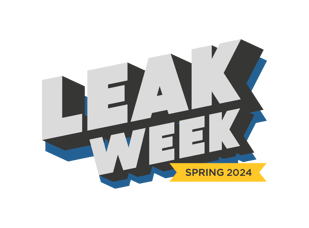First, let’s define a negative leak rate.
The pressure loss of a production part is less than the pressure loss observed during the first calibration cycle (the control test) on the leak-free master part. This measures as a less-than-zero flow, or a negative leak rate. Your production part being tested actually lost less pressure than your master part.
If we have identified that maybe there has been a change, the next thing we will do is recalibrate. That will tear out any leaks that we see.
The calibration part tends to sit on a shelf, stable at the ambient temperature where it is stored. The production parts, on the other hand, may be coming from a wash or a welding process. Given that temperature has such a high impact on leak rate, we would suggest that you warm your calibration part to the same average temperature of your production part when it arrives at the test stand, so it is accurately representative of your manufacturing process.
Depending on part size, interior volume, material and material thickness, the interiors of cold parts may not warm up as fast as the air in the plant. This may lead leak test equipment to report a lower, and misleading, leak rate throughout the day.
At CTS, we’ve developed a feature called environmental drift correction to ensure the repeatability and reliability of your leak test, whatever the season.
The pressure loss of a production part is less than the pressure loss observed during the first calibration cycle (the control test) on the leak-free master part. This measures as a less-than-zero flow, or a negative leak rate. Your production part being tested actually lost less pressure than your master part.
What could cause a negative leak rate? 4 factors to consider
Any recent changes to your test
First, we look at what has changed in the test. Have you changed test lines, replaced seals or o-rings? Is there anything in there that may have affected the volume or hidden a leak that’s inside of your part?If we have identified that maybe there has been a change, the next thing we will do is recalibrate. That will tear out any leaks that we see.
Check the temperature of your parts
A second factor that is quite common is that your production parts may be warmer than your calibration parts.The calibration part tends to sit on a shelf, stable at the ambient temperature where it is stored. The production parts, on the other hand, may be coming from a wash or a welding process. Given that temperature has such a high impact on leak rate, we would suggest that you warm your calibration part to the same average temperature of your production part when it arrives at the test stand, so it is accurately representative of your manufacturing process.
Consider your environment
A final consideration is that in a lot of environments, temperature is hard to control—we call this environmental drift. Maybe ambient temperature within the plant is high in the summer and noticeably lower in winter. In plants that aren’t temperature controlled, parts can cool overnight.Depending on part size, interior volume, material and material thickness, the interiors of cold parts may not warm up as fast as the air in the plant. This may lead leak test equipment to report a lower, and misleading, leak rate throughout the day.
At CTS, we’ve developed a feature called environmental drift correction to ensure the repeatability and reliability of your leak test, whatever the season.
Evaluate your parts
Another situation that can happen is that you may be making better parts that are now leaking less, which is great. If this is the case, you’ll want to take your production parts, select the best of the lot and use that as your new calibration piece with which to adjust your leak test limits.
Are you facing problems on your production line? Or perhaps just looking to make some improvements for better reliability and efficiency. Contact us for a quote, or to consult on potential solutions to your problem. We’re here to help!



